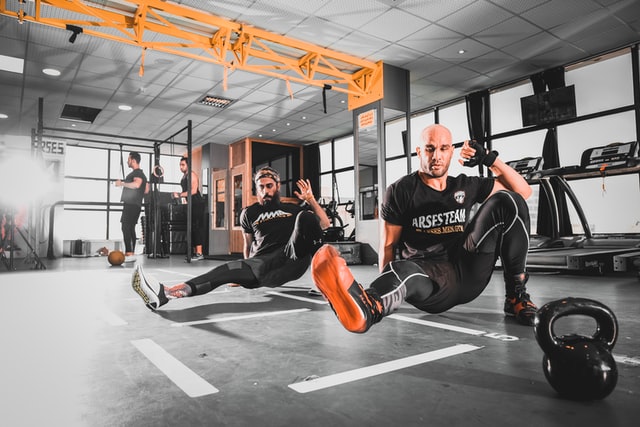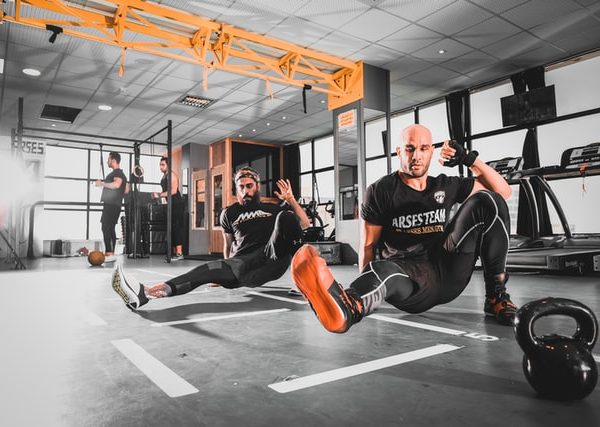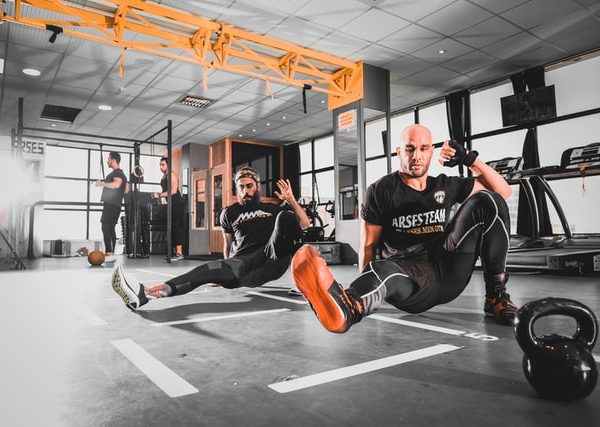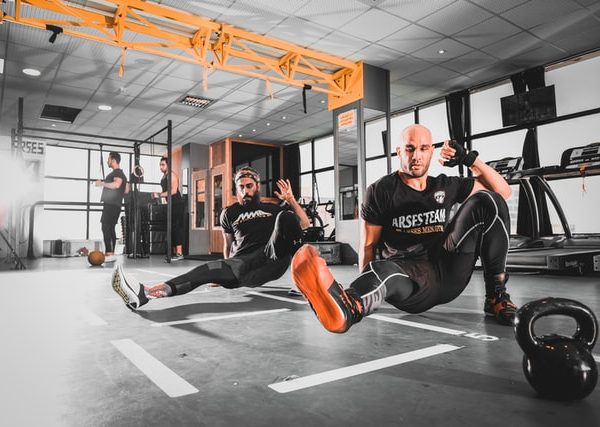Strength Training for Cyclists – bikerbuys.com
Table of Contents
- Why Lifting Weights For Cycling?
- Biomechanics of Cycling
- It’s Not Just Legs
- The Plan: First Comes First
- Exercises in the Gym
- Skill and Strength Exercises Performed On the Bicycle
Cycling is a primarily endurance sport where the greatest energy contribution comes from the aerobic energy contribution. Resistance training or weight lifting is generally an anaerobic activity characterized by periods of high intensity work. At first glance, the two activities appear to be opposite ends of the fitness spectrum. In fact, Lance Armstrong’s personal trainer Cries Carmichael has likened the relationship between weight training and cycling to that of “water and oil.”

While Carmichael recognizes the dichotomy between weight training and cycling, he feels that time spent in the gym lifting weights at the beginning of the season is essential to cementing the rider’s strength base for the subsequent demands of exercise. The competitive season. But what about recreational or amateur cyclists; why should they be interested in weight training?
Why Lifting Weights For Cycling?
In the book The Science of Cycling edited by Dr. Edmund R. Burke, Harvey Newton summarizes the benefits of resistance training:
- First and foremost there is obviously the increase in strength. The essential goal of increasing your cycling performance is to pedal faster. In order to pedal faster cyclists have three options, exert more force on the pedals, pedal faster, or both. Resistance training increases the strength in the muscles necessary to exert more force on the pedals.
- Second, resistance training improves local muscular endurance. If the major muscle groups involved in turning the pedals have increased in resistance, the rider will be able to maintain higher speed for a longer time, thereby improving performance.
- Third, resistance training plays an important role in injury prevention. Cycling is inherently a highly repetitive activity. Consider a cyclist riding for two hours. With a cadence of 94 revolutions per minute (rpm), he or she will perform 11,280 repetitions! If the musculoskeletal system is not prepared to handle this amount of repetitions, overuse injuries can easily occur. Resistance training strengthens the connective tissue found in muscle, tendons, and their attachment sites in the bone. The benefit of this activity is important for the cyclist who wants to stay on the road.
- Finally, resistance training is an important component of the post-injury rehabilitation program to get the athlete back on the bike.
Biomechanics of Cycling
In the power phase, while one leg pushes the pedal down from the starting point at the 12 o’clock position, the following actions occur. The hip flexors contract to flex the hip and prepare it for the push phase. As the rider performs the push, the knee extensors (the muscles that straighten the knee) contract in coordination with the powerful hip extensors that contract to straighten. The plantar flexors (the muscles that make the foot point downward) contract to assist with pushing on the pedals. As the pedal stroke continues the antagonistic (opposite) muscle groups to those mentioned above contract to prepare the leg for the upward phase of the pedal revolution.
Anecdotally, the use of foot straps to the pedals and more recently of locking pedal systems that secure the rider’s foot to the pedal was thought to allow the rider to pull up with the pedal opposite to the one they are pushing. Down. However, laboratory research has accurately shown that the non-pushing leg is actually being primed so as not to harm the pushing leg and to take the load off it. A skilled rider is efficient in both phases: applying more force to the pedal he is pushing while simultaneously unloading the opposite pedal.
A final point on muscle contraction, when riding a bike, is concentric muscle activation. Concentric muscle activation is defined as the generation of muscle force through shortening. Eccentric muscle activation is defined as the generation of muscle force through stretching. Activities that include both concentric and eccentric activation patterns include walking, running, jumping, throwing, and catching. The bicycle as a machine is unique in the sense that it allows the rider to activate the necessary muscle groups concentrically.
It’s Not Just Legs
Cycling is a sport that is performed mainly on the sagittal plane. Anatomically, the sagittal plane cuts the body into a left half and a right half with the axis of rotation oriented 90º from the plane or from the medial part to the lateral part. Simplifying things even more, in the sagittal plane the joints flex (bend) or extend (straighten). From a strength perspective, the rider will want to exercise those muscle groups mentioned previously, which are the ones that work flexing and extending the hip, knee, and ankle, but what about the rest of the body?
The two other anatomical planes that exist are the frontal plane that divides the body into an anterior half and a posterior half; and the transverse plane that divides the body into an upper half and a lower half. The muscles of the trunk, spine and upper extremities that function in these two planes have the main function of stabilizing the movements of the hips, legs and arms. This stabilization allows the rider to impart more force to the pedals because the hips, legs, and arms now have a stable base against which to push and pull while pedaling.
The Plan: First Comes First
The goal of resistance training for the rider is to improve performance. Resistance training should be viewed as an adjunct to cycling training: a means to a better end. A complete resistance training program for a cyclist must be specific, dynamic and adaptable. In order to meet these criteria, the concept of periodization should be used when creating a training plan.
Stone, O’Brien, Grahame, McMullan, and Rosined in a 1982 article in the National Strength and Conditioning Association Journal described periodization as a system for structuring weight training for the cyclist (Table 1 is adapted from that article). . The basic premise of a per iodized training scheme is that training should by nature be cyclical and progressive, allowing rest and regeneration, and manipulating training variables to best prepare the athlete for competition.
Exercises in the Gym
Movements with specific cyclical patterns involve the major muscle groups used in cycling. The goal of these exercises is to train cyclical movement patterns and not to train isolated muscle groups. For this reason, emphasis is placed on using free weights to encourage a challenge and to train your balance reactions. The core musculature includes the abdominals, obliques, transversus abdominis, and the intrinsic and extrinsic stabilizers of the spine. Training with specific cyclical movement patterns inherently activates these stabilizing muscle groups for safe, efficient and functional exercise performance.
Lunges
Using a bar held in the same position as in the traditional squat, stand with one foot slightly more in front of the other and hip-width apart. Maintain a neutral lumbar spine / pelvis relationship throughout the entire performance of the exercise. (In the neutral position of the lumbar spine, the lumbar back is held in a mid / neutral position through a strong contraction of the central musculature. The neutral position of the lumbar spine is achieved by actively “locking” the trunk musculature, or bringing the navel towards the spine to form a rigid wall throughout the trunk).
Place 75-90% of your weight on the foot in front and then lower yourself until the knee of the leg in front is at a 90º angle. The knee of the forward leg should not pass the toe of that same leg. As you move up to the starting position, the front leg should provide the most momentum for the climb, while the rear leg should be on the ground to provide balance and stabilization. The exercise is completed when each leg has performed sets in the forward position.
Single Leg Squat
The single leg squat is performed in a position similar to lunges, however the back leg should be placed on a bench or on a ball behind you to stabilize yourself. The same rules apply to the positioning and depth of the forward leg bend. Due to the nature of this exercise, its proper execution produces a greater demand on balance and stabilization of the trunk (Figure 3). The overload in this exercise can be done with dumbbells or with a barbell. The use of the bar is more difficult because it moves away from the center of gravity.
Uploads to the Bank
Using a barbell or dumbbells, lift onto a flat bench. Most gym weight benches are 14 to 17 inches high. The key to properly performing this exercise is to make sure you use your lead leg for momentum on the climb and descend in a controlled manner. Do not use your back leg to assist in the push phase of the climb. Again, balance is maintained by strongly contracting and “locking” the core muscles during the performance of the exercise
One Arm Row
While holding a dumbbell with only your right hand, and with your feet in a walking position, slightly longer than lunges, lower the dumbbell to the level of your left ankle as you bend your left leg. Maintain the neutral position of the lumbar spine and ensure that the hip and knee of the lead leg are constantly flexed to allow protection of the lower back. Ninety-five percent of your weight is now on your leg and on the sole of your front foot (Figure 6). As you begin to ascend from the lowest position, pull the dumbbell together toward the right edge of the rib cage to complete the exercise. The sets are completed by alternating feet in the leading position and shifting the dumbbell to the opposite hand.
Skill and Strength Exercises Performed On the Bicycle
The following exercises will allow you to effectively transfer the strength gained in the gym to specific exercises on the bike.
One Leg Pedaling
After a warm-up, pedal with one leg for 30-second periods. Pedal with one leg against light to moderate resistance while the other leg stays off the pedal. The pedaling cadence will be lower but you should pedal as smoothly as possible as the skill level increases. Complete 30 seconds of pedaling on one leg followed by 2-4 minutes of normal pedaling with a faster cadence (90-110 rpm). Alternate legs in each series. Progress in 1 minute intervals of single leg pedaling.
Pedaling Sitting and Standing against High Resistance
After warming up, apply a large amount of resistance using the bicycle sprockets and the brake devices on the stationary bicycle. The pedaling cadence in this exercise will be low, 70-80 rpm sitting, 60-70 rpm standing. When performing this exercise in a seated position, your hands should be flat and on the top of the handlebars, and you should focus on gentle pedaling and keeping your upper body very stable (Figure 8, previous page). When pedaling against resistance, the pelvic or shoulder sway should be controlled by contracting the core muscles to maintain a solid base so that the legs push against the pedal. When pedaling in the stopped position, brake levers are commonly taken. Begin pedaling against a high resistance for 2 minutes. With practice and training these periods can be extended up to 10 minutes.
Caution: These exercises place a compression load on the knees. Do not attempt this exercise until you have completed the basic phase of strength training described in Table 1. Athletes with knee injuries or chronic knee pain should not perform this exercise.
A comprehensive training program that includes both resistance training and resistance training will maximize cycling performance.






